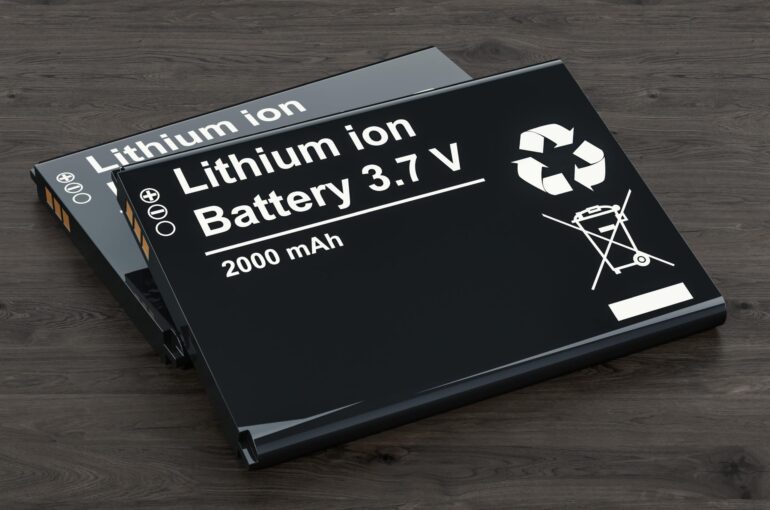Everything’s called a breakthrough these days. So how do you pitch an actual breakthrough?
Everything’s called a breakthrough these days. So how do you pitch an actual breakthrough?

The Problem
Despite what you may have heard, a miracle product doesn’t necessarily sell itself. In fact, the sheer background noise of industry often makes the most exciting stories the hardest to sell. Here is a case study in managing the shockwaves of an idea with impact to spare.
Lithium-ion batteries run just about everything in our world, and that’s a problem. They’re toxic, they rely on minerals scarce enough to inspire global competition, and, worst of all, they’re absurdly inefficient. But despite the explosion of battery-powered products in the last few decades—a trend that’s only just getting started, by the way—the chemistry that makes it all possible has barely evolved. To this day, only about 5% of the material in a battery is actually used to generate energy.
These shortcomings captured the imagination of a client of ours, an early-phase chemistry startup with a culture built around radical thinking and real-world results. Over the course of years, they tested thousands upon thousands of compounds, giving even the most far-fetched ideas a shot in their search for an alternative to traditional battery materials. Eventually, the elbow grease paid off: their current prototype leaves today’s state-of-the-art in the dust with a staggering 95% efficiency. That’s a gain of 90 percentage points. And it does it all with cheap, non-toxic minerals. If that number doesn’t sound right to you—like a typo, or a glimpse of the world many generations from now–you can imagine how we felt.
Why they had trouble expressing it
Our client’s results were simply too good, and that put them in a bind. Why? Because of a phenomenon we call breakthrough fatigue.
If you haven’t been keeping score, adjectives like “revolutionary” and “game-changing” have been subjected to such numbing, maddening overuse that they’re now all but stripped of meaning. It’s what happens when the exact same language once used to describe disease cures and peace treaties is also used—year in, year out—to describe a smartphone that can take marginally sharper photos than the one in your pocket. It’s the technological equivalent of crying wolf, and it leaves innovators in a tough spot when they’re actually on the verge of changing the world; when everything’s revolutionary, nothing is.
So what do you do when you have an actual breakthrough on your hands?
How we solved it
Fortunately, this was exactly the scenario we’d spent our careers training for. We founded our agency on a rejection of communication industry’s worst cliches, which makes a technological leap of this scale the perfect opportunity to explore new territory in conveying big ideas. For instance, the age-old screenwriting mantra of “show, don’t tell,” has long been the guiding principle of our process; if we can’t call our client’s technology a “revolution”—and that’s probably for the best at this point—then it’s our job to get their audience to do it for us. In other words, we’ll simply present the dots, and let the connections form in the mind of the viewer.
Of course, it takes a lot of work to make anything feel intuitive, let alone something so technical and arcane, and this meant diving headlong into the science of battery chemistry. One side effect of breakthrough fatigue—a positive one, admittedly, but a challenge nonetheless—is that the average investor’s BS detector is turned up to 11, and that keeps us on our toes at all times. We needed to speak our client’s language with total authenticity, and that meant an intensive research phase of academic literature, competitive analysis, and far-reaching conversations with the company’s chief scientist.
But the result—once we’d finished the equivalent of cramming for finals week—was a clear understanding of exactly how they made the discoveries they made, and how these ideas had eluded the industry’s brightest minds for so long. From there, we retraced our steps and identified the clearest possible distillation that would allow an uninitiated audience to see what we’d seen, and, most importantly, to get there as fast as possible. Often, this is the skill that makes our work most useful to our clients—the ability to sift through reams of homework and extract a tightly written story that leads its audience to a naturally compelling conclusion: in this case, that our client is nothing short of a turning point in the history of batteries.
What’s next
That kernel of an idea quickly led to an entire messaging platform and made it possible to share the excitement of an honest-to-god breakthrough in a world sick to death of hearing about breakthroughs. They’re currently seeking their next round of funding—with our story serving as the core of their pitch—and we’re looking forward to helping them reach ever-larger audiences as they grow.
